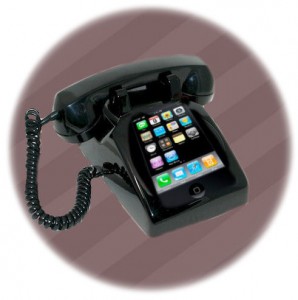 I am of the generation that grew up in a largely pre-digital era. With the pace of technological innovation in today’s world being what it is, nearly all of us can say we have seen a tremendous amount of change in our lifetime. Yet I find myself in a challenging and somewhat frustrating position; I need to be able to competently use the latest technology while maintaining a skill set related to that which is rapidly being rendered obsolete.
I am of the generation that grew up in a largely pre-digital era. With the pace of technological innovation in today’s world being what it is, nearly all of us can say we have seen a tremendous amount of change in our lifetime. Yet I find myself in a challenging and somewhat frustrating position; I need to be able to competently use the latest technology while maintaining a skill set related to that which is rapidly being rendered obsolete.
The best way to illustrate the need for this is to reference my own family. I communicate with my adult children via text messaging and occasionally through a social networking medium. Typical of most digital natives, online media is their first choice when it comes to news, sports and entertainment. We carry our smartphones with us practically everywhere and can connect in seconds, although I can count on the fingers of one hand the number of times we actually used those devices as telephones. Our practice has been to exchange bite sized pieces of text information. I respect that they prefer to communicate in this fashion
My elderly mother receives a daily printed newspaper. She does not have internet access in her home, and relies on the radio and television for her news and entertainment. She has a cell phone and I continue to try to persuade her that the device is essentially useless when turned off. (From her perspective, there is no reason to turn it on if she is not actively using it.) She relies on her land line telephone, preferring real time conversation as her primary means of distance communication. I respect that she prefers to communicate in this fashion.
I am caught in the middle with a perspective that yields a unique understanding of both digital cultures. As a result, I am proficient in accessing communication technologies across generations, something of which I am not confident either generational extreme can boast.
Out with the old and in with the new?
A number of my age cohorts are tech savy, others are decidedly not. As a high school principal, many of the parents with whom I interact typically fall somewhere within that continuum. Does that impact on how I communicate with them? It most certainly does.
Consider the traditional school newsletter, which continues to be a commonly used communication tool. Stuffed into backpacks and binders, some might find their way home to their intended audience, but many do not. Recognizing that they could improve on their delivery rate, schools began to make newsletters available online or to email them directly to parents, yet they did not necessarily abandon the hard copy backpack-delivery model. This is in recognition of the fact that we are dealing with parents who relate best to a paper newsletter as well as those who prefer to receive that information electronically.
So are schools then to exploit new technologies while maintaining older, even obsolete means of communication? My answer to that is a qualified no. While we are obliged to communicate with parents and with the community at large, it is our responsibility to enable them to receive information in more current formats and move away from yesterday’s practice.
It has been years since I have sent home a regular printed school newsletter. Our school sends one major newsletter style publication home each year as an insert in the year-end report card. It includes information about the upcoming school year and frequently references the school website as an information source. QR codes direct the more tech savy parents to relevant sections of the school website and it is clearly indicated that this is the one printed newsletter parents can expect to receive. Our goal is education, and that includes enabling the ability to access school information through modern means.
I recognize that some people may be incapable of accessing information through current technology, and for these people we gladly print and send the relevant sections of the school website. These are increasingly rare cases.
Straddling that digital divide can be a challenge. Parents, particularly those of high school students, are largely digital immigants. While one may deem it necessary to preserve dated strategies to faciliate communication with all parents, the resulting reality sees the same information available in a variety formats and delivery models. This redundancy is ultimately inefficient.
At some point we must abandon the obsolete. As communication technologies evolve, so must our practices.
